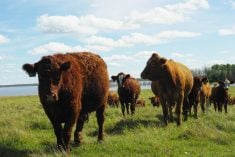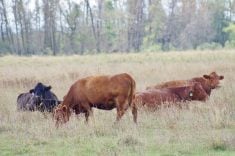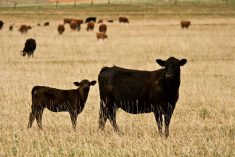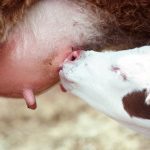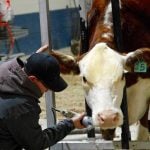Western Canadian prices for backgrounded replacements were $2 to $4 higher than last week. Lower flesh yearlings were valued $3 to $8 above week-ago levels. Prices for calves under 800 pounds were up $3 to $7 compared to seven days earlier with noted strength in feeders under 600 pounds.
It’s that time of year when supplies of calves start to decline while demand for grassers increases. We also believe the trade is factoring in a sharp year-over-year decline in the U.S. third quarter beef production, which has bolstered prices for backgrounded cattle. Optimal weather contributed to the firmer tone.
Read Also

New opportunities for Canadian goods in Mexico
Agriculture minister’s trip to Mexico sees promotion of Canadian goods like beef and canola, with potential for more partnerships in the future
Order buyers reported that some finishing lots were quiet this week but there was still strong enough buying interest to result in a firmer tone. Supplies of calves are decreasing and there are concerns that yearling numbers will be down this August. Therefore, many finishing operators are securing volume of light weight calves with many heading to a custom lot in the short-term.
In Central Alberta, a small package of medium to larger frame steers averaging 925 pounds on silage diet with full health records sold for $322. Southeast Edmonton, a larger group of Charolais blended steers with lighter flesh around 867 pounds dropped the gavel at $334. South of Calgary, Simmental based heifers with medium flesh on light grain and silage diet averaging 850 pounds apparently traded for $305. Southeast of Saskatoon, Angus based steers with thinner frames averaging with a scale weight of 820 pounds were last bid at $340.
North of Brandon, longer term weaned red steer calves averaging 735 pounds supposedly sold for $367. At the same sale, medium to thinner flesh, larger frame Simmental heifers weighing just over 700 pounds reportedly traded for $328. North of Saskatoon, weaned, Charolais-based steers varying around 710 pounds were apparently notched the chart at $381.
South of Edmonton, Angus mixed, fully weaned steers on light barley and silage diet with full health data about 624 pounds supposedly left the ring at $429. In East Central Saskatchewan, black Limousin-blended, weaned steers with thinner frames weighing 610 pounds were valued at $438. North of Calgary, red weaned, run-of-the-mill heifers recorded at 575 pounds reportedly sold for $382.
In Southern Manitoba, a handful of 525-pound red steers were stopped at $450; however, near Saskatoon, semi weaned 505 pounds black mixed steers traded for $486. Near Lethbridge, a market report had 470 pound steers selling for $508.
Statistics Canada’s first acreage survey had barley acres at 7.1 million, down only 2.5 per cent from last year. Using a traditional abandonment rate and an average yield of 69 bu/acre, production has potential to reach 9.8 million tonnes, up from the 2023 output of 8.9 million tonnes. This was a bearish influence on new-crop barley prices contributing to the firmer tone for feeder cattle.
— Jerry Klassen is president and founder of Resilient Capital, specializing in proprietary commodity futures trading and market analysis. Jerry consults with feedlots on risk management and writes a weekly cattle market commentary. He can be reached at 204-504-8339 or via his website at ResilCapital.com.





